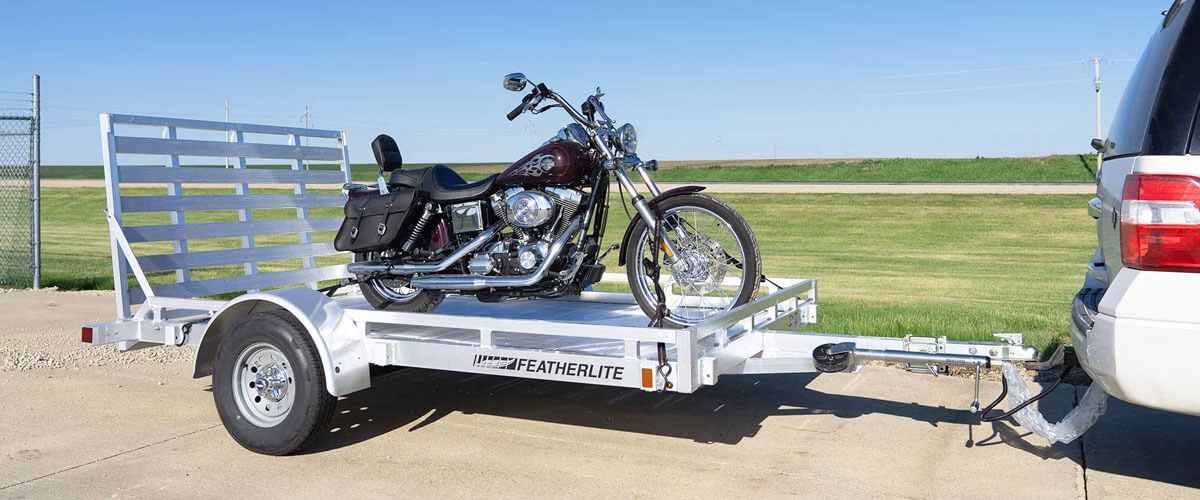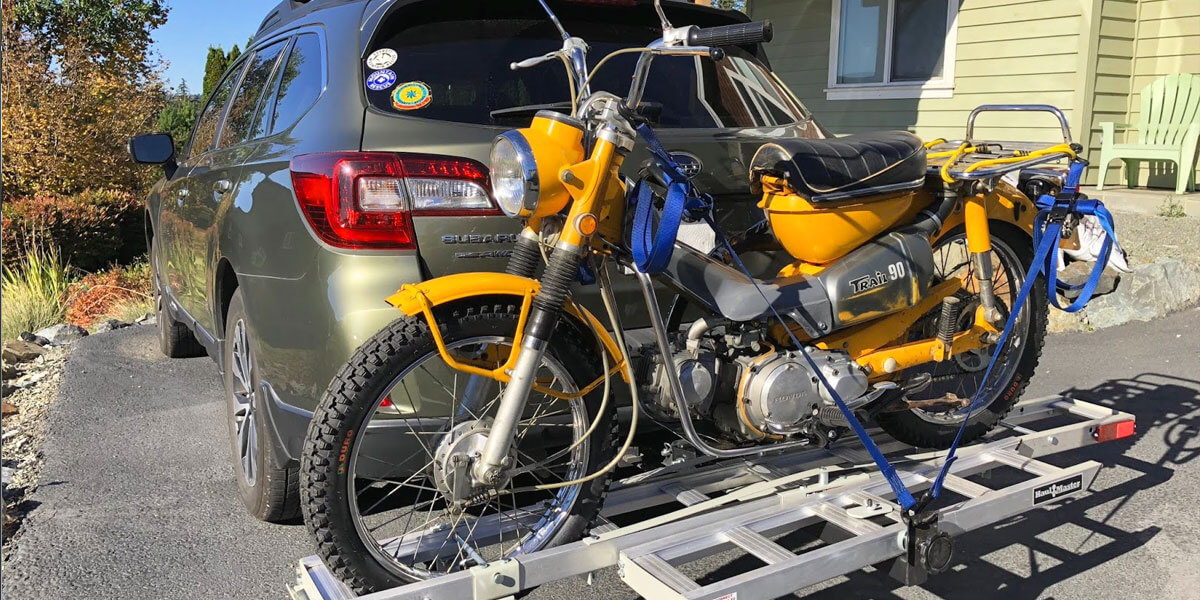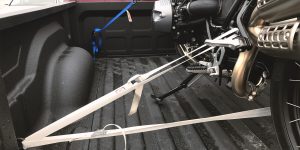How to transport a motorcycle safely and securely is a topic of utmost importance for motorcycle enthusiasts. Proper transportation methods are essential to ensure the well-being and safety of your prized two-wheeler. Whether you need to move your motorcycle across town or the country, several options are available. In this article, I will share different methods of motorcycle transportation and highlight key factors to consider when choosing the most suitable option.
Choosing the proper method for motorcycle transporting

Whether you need to move a motorcycle for a long enough distance, you can use motorcycle trailers, pickup trucks, vans, and hitch carriers.
Motorcycle trailers
Based on my experience, I can claim that motorcycle trailers offer numerous advantages when it comes to the question of how to transport motorcycles. Additionally, they are compatible with towing a motorcycle with a car, providing a convenient and efficient solution for transporting your bikes securely, whether for interstate motorcycle transportation or shipping a motorcycle to another state.
Advantages of using motorcycle trailers:
- Multi-bike capacity: Motorcycle trailers are designed to transport multiple bikes simultaneously, making them ideal for group rides or moving multiple motorcycles at once.
- Versatility: These trailers can accommodate different types and sizes of motorcycles, providing a versatile transportation solution for various bike models.
- Weather protection: Closed or enclosed motorcycle trailers offer protection from adverse weather conditions, keeping your bikes safe from rain, snow, and wind.
I’ve prepared the tables with the types of motorcycle trailers:
| Type of Trailers | Pros | Cons |
|---|---|---|
| Closed trailers |
|
|
| Open trailers |
|
|
| Foldable trailers |
|
|
Pickup trucks and vans
Pickup trucks and vans can be utilized as alternative options for transporting motorcycles, offering flexibility and convenience. There are two main approaches: loading the bikes directly into the truck bed or utilizing motorcycle ramps or loading systems.
Advantages of using pickup trucks or vans for motorcycle transport:
- Versatility: Pickup trucks and vans are multipurpose vehicles, allowing you to transport motorcycles alongside other cargo or passengers.
- Accessibility: Loading motorcycles onto truck beds is relatively straightforward, requiring minimal additional equipment.
- Cost-effective: If you already own a pickup truck or van, utilizing it for motorcycle transportation eliminates the need to invest in specialized trailers.
Potential challenges when using pickup trucks or vans for motorcycle transport:
- Limited capacity: The size of the truck bed or cargo area restricts the number of motorcycles that can be transported simultaneously.
- Proper securing: It is crucial to securely fasten the motorcycles using tie-down straps or other reliable methods to prevent shifting during transit.
- Weather protection: Unlike enclosed trailers, pickup trucks and vans do not provide protection from adverse weather conditions. Consider using special covers or tarps to shield the bikes from rain, dust, and debris.
Motorcycle hitch carriers
Motorcycle hitch carriers provide a convenient and user-friendly solution for transporting motorcycles. Let’s explore the advantages, types of available hitch carriers, and key factors to consider when choosing the right carrier for your motorcycle:
Advantages of using motorcycle hitch carriers:
- Convenience: Hitch carriers offer easy loading and unloading of motorcycles, eliminating the need for ramps or additional equipment.
- Ease of use: These carriers are designed to attach to the hitch receiver of a vehicle, allowing for quick and straightforward installation.
- Towing capability: Hitch carriers allow you to tow your motorcycle behind a vehicle, making them a practical choice for road trips or camping adventures.
Here are the types of hitch carriers:
| Type of Motorcycle Hitch Carrier | Pros | Cons |
|---|---|---|
| Platform carriers |
|
|
| Motorcycle trailer hitch racks |
|
|
| Swing-away carriers |
|
|
Essential tips for motorcycle transportation

Preparing the motorcycle
Properly preparing your motorcycle for transportation is important to ensure its safety during transit, and knowing how to haul a motorcycle is essential. Here’s a checklist of 5 steps to follow when preparing your bike for transportation:
- Clean the motorcycle: Give your bike a thorough cleaning to remove any dirt, grime, or debris that could potentially cause damage during transport.
- Inspect for damages: Conduct a detailed inspection of your motorcycle to identify any existing damages. Take note of any scratches, dents, or mechanical issues before transporting.
- Secure loose items: Remove any detachable accessories or loose parts from the motorcycle. This includes saddlebags, mirrors, and other aftermarket additions that could damage or cause damage during transport.
- Remove the battery: Disconnect the battery to prevent any potential electrical issues or drain during transit. Follow the manufacturer’s instructions for proper battery removal.
- Fuel and fluid levels: Ensure that the fuel tank is not completely full to allow for expansion. However, make sure it has enough fuel to reach your destination. Check other fluid levels, such as oil and coolant, and adjust if necessary.
Securing and loading the motorcycle
Properly securing and loading your motorcycle onto the chosen transportation method is essential to prevent shifting or damage during transit. Here are the correct methods to ensure secure transport:
- Utilize tie-down straps: Use high-quality tie-down straps to secure the motorcycle to the transportation device.
- Use wheel chocks: If available, use wheel chocks to stabilize the motorcycle’s wheels and prevent movement.
- Employ anti-recoil devices: To prevent backward movement, consider using anti-recoil devices, such as wheel cradles or wheel wedges. These devices help keep the motorcycle in place and reduce the risk of damage.
- Follow loading instructions: Follow the specific loading instructions for your chosen transportation method.
- Ensure balance and weight distribution: Maintain a balanced weight distribution during loading.
Legal and regulatory requirements
Here’s an overview of the common considerations and regulations:Transporting motorcycles involves adhering to various legal and regulatory requirements.
- Licensing: Ensure you have the appropriate driver’s license or endorsement required to operate a vehicle with a trailer or hitch carrier. Specific license requirements may vary by region or country.
- Registration and insurance: Ensure your motorcycle and the transportation method are properly registered and insured according to local laws and regulations.
- Towing regulations: Familiarize yourself with towing regulations specific to motorcycles and the chosen transportation method. Check weight limits, towing speed restrictions, and any additional requirements for safe towing.
It’s important to consult the local transportation authorities or regulatory bodies to ensure compliance with all legal requirements for motorcycle transportation in your area.

















